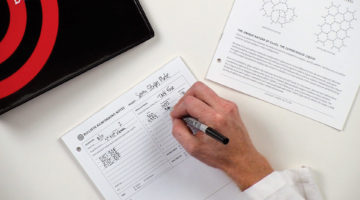
Kilnformed Container L028
This lesson provides basic instructions for making a thick-walled kilnformed glass container.

This lesson provides basic instructions for making a thick-walled kilnformed glass container.

In this lesson you will learn how to transform a Paragon Caldera kiln into a Vitrigraph kiln and how to safely hand-pull stringers to use when designing, drawing, or painting with glass.

In this lesson, you will learn considerations for preparing a model, tips for making an open-faced mold and calculating the amount of glass needed to fill it.

With certain glasses, chemistries will interact to create effects and different colors than what one might anticipate. Learn about the types of possible reactions, which can prove quite useful in art and design.

In this lesson, using what you learned in "Firing: Basic Principles" you will design firing schedules for fusing, tack-fusing and slumping a platter with a textured surface.

By following these step-by-step instructions you will learn how special colors and effects can be achieved when glass chemistries interact.

Artist Ted Sawyer demonstrates his approach to working with powder on sheet glass, creating two signature pieces in the Research & Education studio of Bullseye Glass Co.

In this lesson you will learn how to achieve a variety of surface textures and finishes with frit by varying time and temperature in the kiln.

In this lesson you will learn about the relationship between heatwork and color in sheet glass.

In this lesson, learn the eight basic steps that make up a firing schedule and why they are important.

In this lesson you will learn how to operate a kiln to control precisely how glass is heated, cooled and ultimately formed.

In this lesson you will learn about types of kiln furniture and how to use them in kilnforming glass.